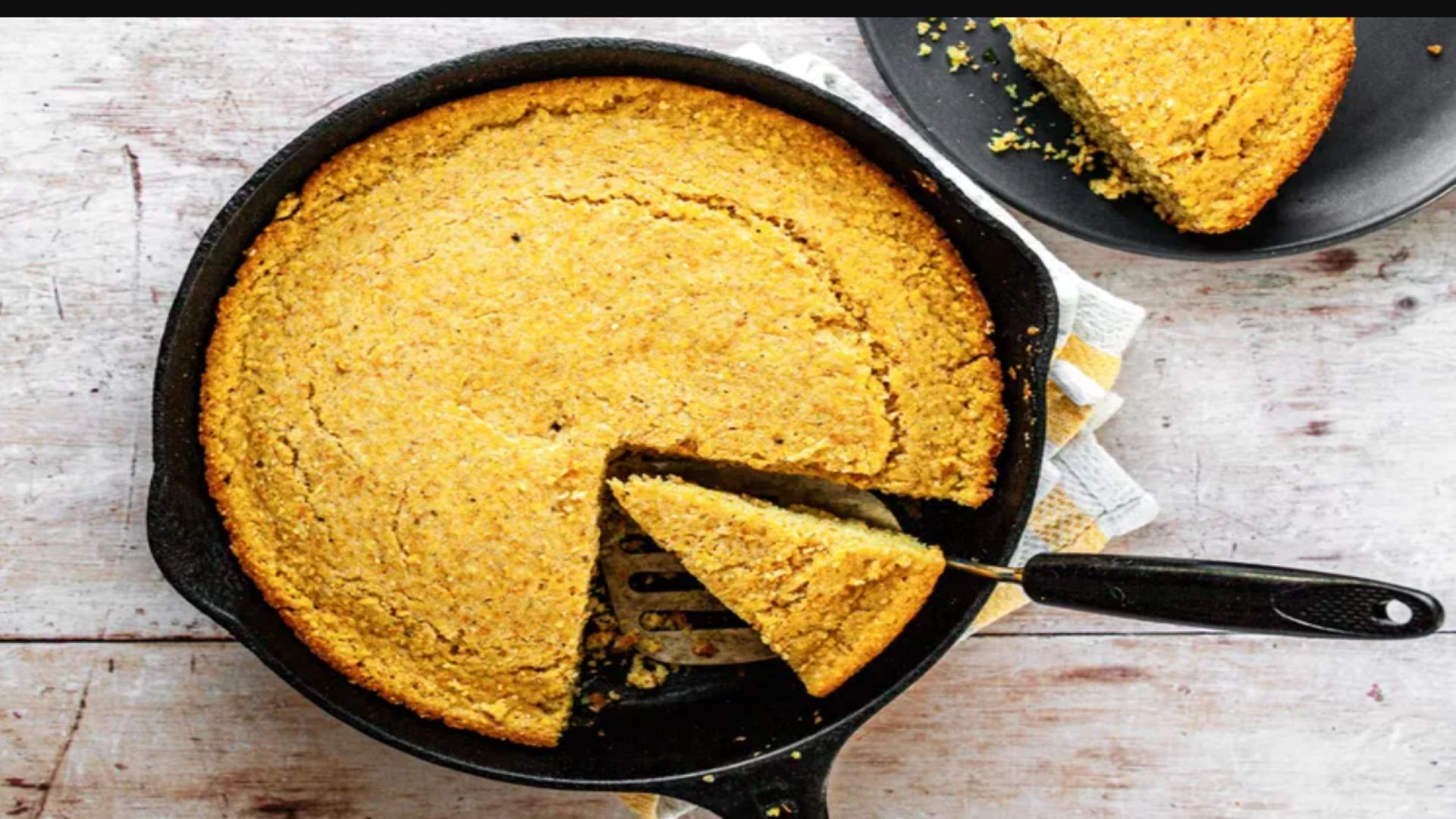Top 5 Best Dishes in Thailand
 |
| Photo KnowInsiders |
Thanks to its exotic flavours and fragrances, Thai cuisine is popular worldwide. A walk through the country’s alleyways often results in a stop at a food stall, where you can enjoy skewered meats, fried rice, noodles, and spicy soups at rather affordable prices.
Here is a list of five best food in Thailand:
1.Tom Yum Goong (Spicy Shrimp Soup)
2.Som Tam (Spicy Green Papaya Salad)
3.Laab (Spicy Salad)
4.Pad Thai (Thai Style Fried Noodles)
5.Panang (Thai Curry)
Let's explore the details and recipes:
1.Tom Yum Goong (Spicy Shrimp Soup)
Tom Yum Goong is a bold, refreshing blend of fragrant lemongrass, chilli, galangal, kaffir lime leaves, shallots, lime juice, and fish sauce. Containing succulent river shrimps and straw mushrooms, this spicy and sour soup is best paired with steamed white rice.
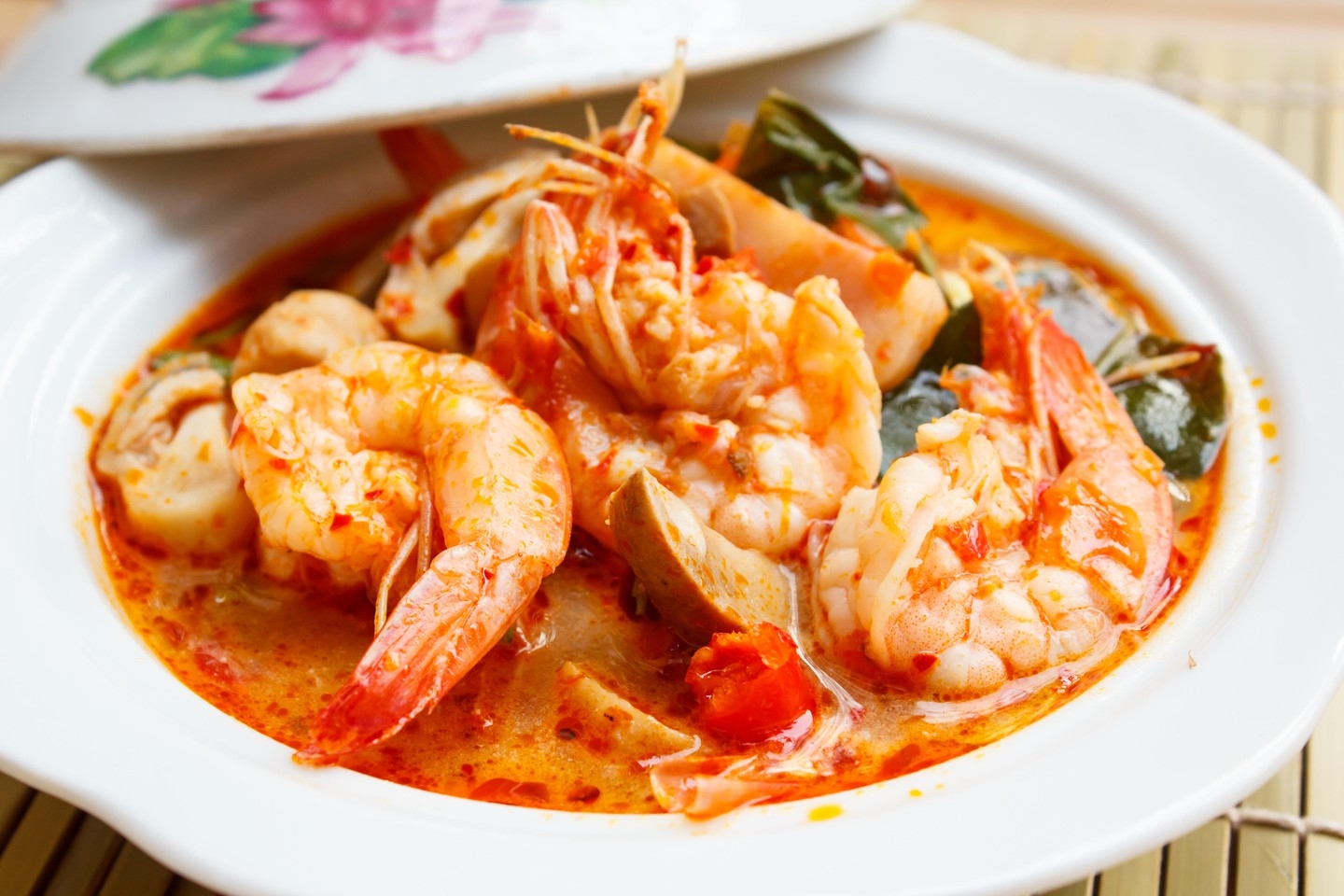 |
| Photo The Culture Trip |
This iconic bowl of steaming goodness is bold, aromatic and comes with a fairly strong spicy kick. Tom yum goong is created with quintessential Thai ingredients like lemongrass, chilli, galangal, kaffier lime leaves, shallots, fresh lime juice and plenty of fish sauce. Fresh prawns and mushrooms are added and coconut cream if you want the creamy version.
Starting from herb-infused shrimp or fish broth, tom yum kept developing through centuries reflecting the changes in Thai diet and availability of ingredients. For example, the Thaifoodmaster website shares a recipe of a peculiar tom yum, first published in 1890 Thai cookbook Tam Raa Gap Khao by Maawm Sohm Jeen (Raa Chaa Noopraphan). Named tom yum pla chon, the dish is more than just tom yum with snakehead fish (pla chon). Maawm Sohm Jeen adds richness to the broth by adding her own fried chilli paste and throws in some shredded green mango as a vegetable component. At the same time, the recipe doesn’t include kaffir lime or galangal, but still the heart of it is good fish broth, served with seasonings, giving it the desired spicy, salty, sour and sweet taste, characteristic of tom yum.
The 1890 recipe is a good illustration of how diverse Thai tom yum was even 129 years ago. With shrimp or fish, straw mushrooms or tomatoes, cream or shredded mango, it is still a soup loved by every Thai. Yet it remains very intriguing to hear what Thai academics will define tom yum as in their Unesco application.
2.Som Tam (Spicy Green Papaya Salad)
Som tum, or spicy green papaya salad, comes from Thailand’s north-eastern state of Isaan. Garlic, chillies, green beans, cherry tomatoes, and shredded raw papaya are pounded using a pestle and mortar, which release a sweet-sour-spicy flavour that's quite distinctive. Regional variations include peanuts, dry shrimp or salted crab into the mix. This dish can be polarizing, as some can't get enough of its taste, while others simply can't handle the spice.
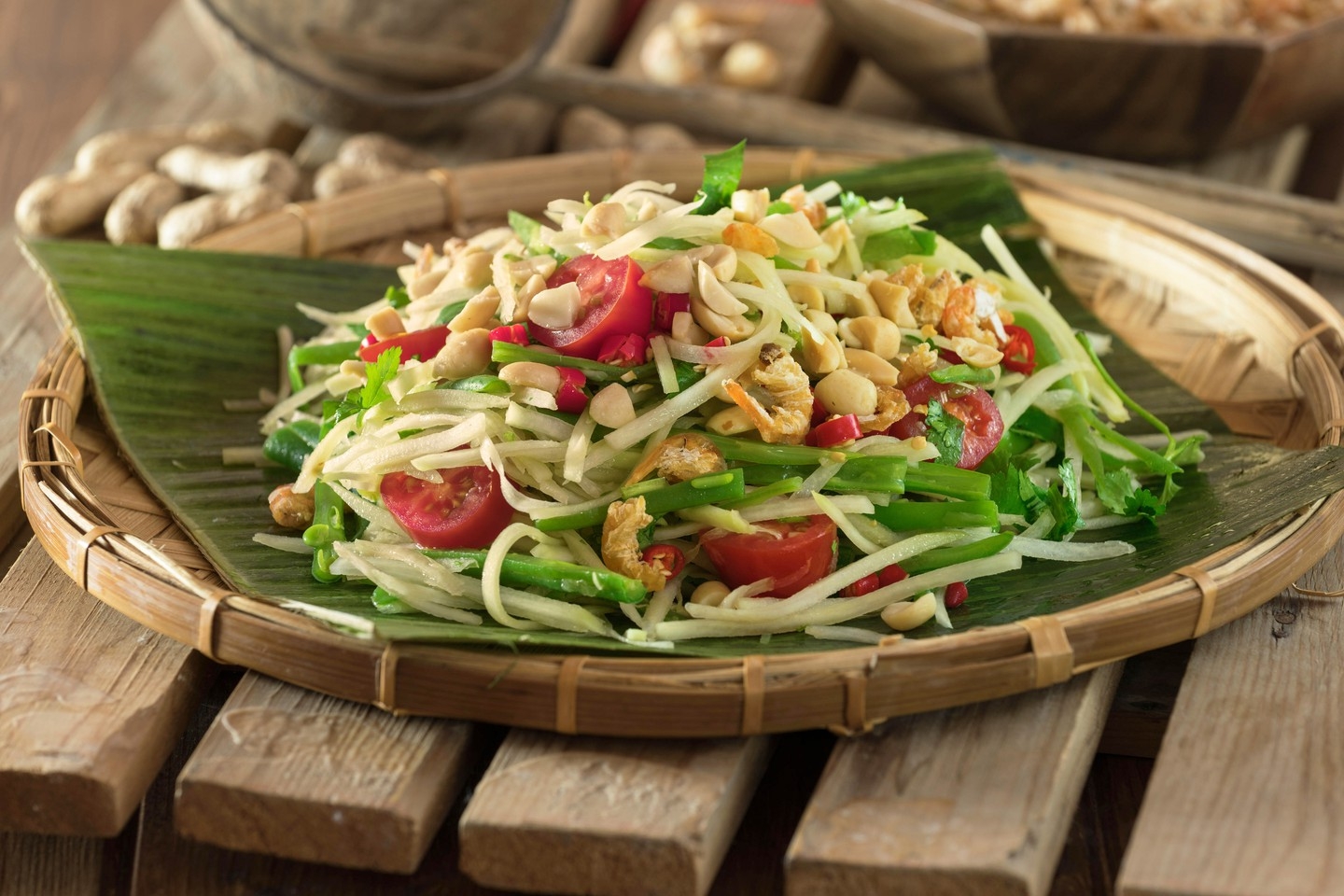 |
| Photo The Culture Trip |
Som tam hails from Isaan in Northeastern Thailand and is one of the most popular dishes in Thailand. Som tam comes in a variety of styles, however, the classic som tam consists of shredded green papaya, tomatoes, carrots, peanuts, dried shrimp, runner beans, palm sugar, tamarind pulp, fish sauce, lime juice, garlic and plenty of chillies. The ingredients are mixed together using a mortar and pestle, which amplifies the flavours into a super moreish dish.
While the majority of Thai dishes strive to balance sweet, sour and salty, Isan food comes loaded with fermented fish and punchy chilies, making it very pungent, very hot or very sharp. (It also features a wide range of insects and amphibians, once essential for survival and now served as treats and snacks.)
The powerful combination of shredded unripe papaya, which is plentiful in the region, dressed with pounded chili, fermented fish sauce, dried shrimp, garlic and lime is rather addictive. Beyond Isan, palm sugar is often added to the dressing and the sourness and heat are toned down to suit the tastes of more moderate Thai palates, as well as of tourists. In the late 1800s, a new railway connected Ubon Ratchathani in Isan to Bangkok and drove migration south. When newly arrived Isan people made som tam for Bangkok residents, they realized they needed to tone it down a notch; today, diners are often asked to specify how they’d like it to be made.
3.Laab (Spicy Salad)
Laab is a northeastern-style salad with meat or mushroom and mint which originates in the northeastern province of Isan. Laab comes in a variety of styles including chicken, pork, and mushroom. It is not recommended for those who can’t handle spice as it tends to come with a hefty kick.
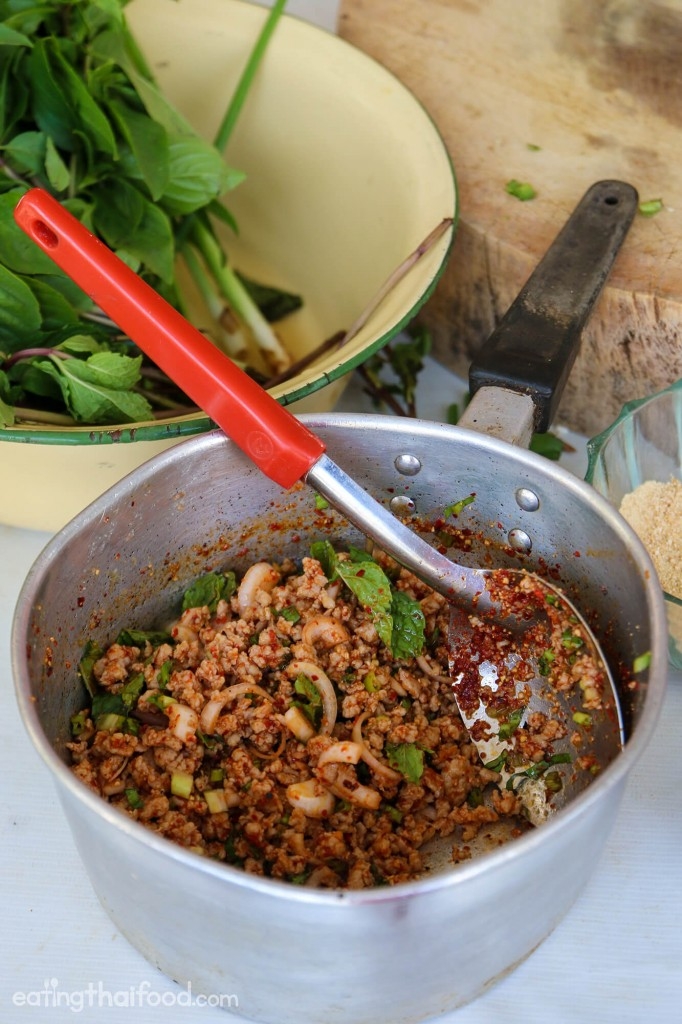 |
| Photo Eating Thai Food |
One of the most essential ingredients in any Thai larb recipe is something known as khao kua or toasted sticky rice. It’s a really important part of Thai larb as it gives the pork a crunchy bite and a roasted fragrance.
The good news is, you should be able to purchase Thai sticky rice at most Asian supermarkets, and then it’s pretty easy to toast the rice and make it yourself.
Thai larb rarely uses fresh chilies, and instead uses dry ground chili flakes, known as prik bon, to give it some color and heat.
Laab Recipe
Time: About 30 minutes or less
Recipe size: This recipe makes one good sized plate / bowl full of larb. So depending on how many dishes you have for a meal, it could be big enough for 1 – 2 people, or shared between 3 – 4 people (if you have a full spread of Thai dishes).
Utensils: Small saucepan
Flavors: Fresh meat based salad, great herb flavors, mix of chili and salty
Eat it with: Larb is a Thai Isaan dish, normally eaten along with a side of Thai green papaya salad (som tam) and a plate of steamed Thai sticky rice.
Like I mention in all my Thai recipes, Thai food is very much a taste-test based cuisine. So please use the ingredients listed in this larb recipe as a guide, but not as exact instruction. You need to taste test to make sure your larb is balanced the way you like it – with the fish sauce, lime juice, chilies, etc.
Ingredients
Pre-ingredient
About 5 tablespoons of uncooked Thai sticky rice (but for the actual dish I used about 1 heaping tablespoon after we made it into powder - see directions)
Main ingredients
300 grams (1 pound) minced pork (minced chicken or minced beef will also work well)
½ - 1 tablespoon of chili flakes (prik bon)
⅛ tablespoon of sugar (just a pinch)
½ tablespoon of fish sauce (here's the fish sauce I use)
1 - 2 limes (I used the juice from about 1.5 limes)
3 - 4 small shallots (Thai shallots are only about the size of grapes, so if you have bigger shallots just use however much you want)
A few leaves of Culantro - this is an herb also known as long coriander, it tastes a little like cilantro (if you can't find any cilantro, don't worry about it, it's not a must)
3 - 5 spring onions (green onions)
About 20 leaves or so of fresh mint
Instructions
Toasted sticky rice (khao kua)
First step is to make the toasted rice (khao kua ข้าวคั่ว).
Heat a frying pan on low heat, toss in the uncooked Thai sticky rice (no oil). Stir continuously, kind of like you’re roasting peanuts or coffee. Toast the rice until it turns from white to golden yellow, almost to the point where it looks like brown wheat. It will also be very fragrant and smell almost like popcorn. It took me about 15 minutes or so.
Once the rice is finished toasting, and has cooled off a bit, put it into your stone mortar and pestle. Pound the rice until it turns into a coarse powder (a blender or food processor will also work fine). Put your toasted sticky rice powder in a bowl aside.
Add 300 grams of minced pork to a small sized saucepan with a handle. Fry the pork, breaking it into small minced pieces, until it’s fully cooked all the way through. For best flavor, leave all the oils that come out (but if you want to be healthier, you can also drain the pork oil, and add in a splash of water instead). Take the pork off the heat.
Leaving the pork in the same pot, add 1 heaping tablespoon of the toasted rice powder into the pork. Also toss in ½ - 1 tablespoon of chili flakes.
Add a pinch of sugar, ½ tablespoon of fish sauce, and squeeze in the juice from 1 - 2 limes (I used about 1 ½ full limes, but I like it quite sour).
Give the pork and the seasoning a quick stir.
Peel and slice the shallots, finely mince about 5 green onions and a few culantro leaves (if you have them), and just pluck about 20 or so mint leaves off the stem. Throw everything into the saucepan with the pork.
Give the larb moo a good mix, making sure all the spices and dressing coats the pork.
Taste test. See if it needs more fish sauce for saltiness, lime juice, or chili flakes. Get it the way you want it.
Dish it out onto a plate and garnish with more mint leaves, Thai sweet basil, and culantro.
READ MORE: How to Make a Delicious Egg Salad Sandwich with Best Recipe Ever?
4.Pad Thai (Thai Style Fried Noodles)
Pad Thai is one of Thailand’s most recognised dishes. Fistfuls of small, thin or wide noodles, along with crunchy beansprouts, onion, and egg are stir-fried in a searing hot wok. The dish is also flavoured with condiments such as fish sauce, dried shrimp, garlic or shallots, red chilli, and palm sugar. Pad Thai usually contains seafood – especially fresh shrimp, crab or squid – but some places serve it with chicken, beef or pork. The stir-fried noodles are often plated with a slice of lime wedge, crushed roasted peanuts, bean sprouts, and fresh herbs.
Pad thai is one of Thailands national dishes and is a go-to for tourists who are starting out their Thai cuisine exploration. Pad thai is a fried noodle dish which is usually made with shrimp or chicken, however, the vegetarian option is popular too. Pad thai is available on almost every street corner and is a cheap and tasty meal.
 |
| Photo The Culture Trip |
Pad Thai (or phat Thai) is a relative newcomer in food history terms. The dish was popularized and possibly even created by Prime Minister Plaek Pibulsonggram—better known by his nickname Phibun—in the 1940s. Phibun was convinced that Siam, as the country was then known, needed something to bring together its disparate collection of often-impoverished communities, some of which spoke distinct dialects. Beyond wealthier, developed centers like Bangkok, parts of the country were still very poor and he wanted to both modernize and westernize it. Finding a national dish to promote appealed to the government (which also banned dialects from schools and changed the country’s name to one which referenced the ethnic roots of the many citizens descended from the T’ai people, originally from Yunnan, China).
Phibun didn’t just eat pad Thai at home: his government distributed the basic recipe across the country, and encouraged street-food traders to serve it from wheeled wooden carts. Many Thais had until then been subsisting on a diet of rice, chili paste (nam prik) and leafy vegetables. Pad Thai was cheap, tasty and far more nutritious, even more so as chicken, pork or seafood were added in the following decades.
Despite being named after Thailand, the noodles that make its base are without doubt Chinese, as is the way they are stir-fried; the vegetables are cooked using techniques found in eastern China. The dish did its job, though, and helped create both a culinary and a cultural national identity, making the fact that pad Thai is really a foreign hybrid created only 75 years ago virtually irrelevant to modern diners.
5.Panang (Thai Curry)
Panang curry is a bit milder than its other curry counterparts in Thailand. It is for this reason that it remains a popular dish amongst tourists who are remaining in the spicy “safe zone.” Panang curry typically is served with shrimp, although vegetarian options are popular too.
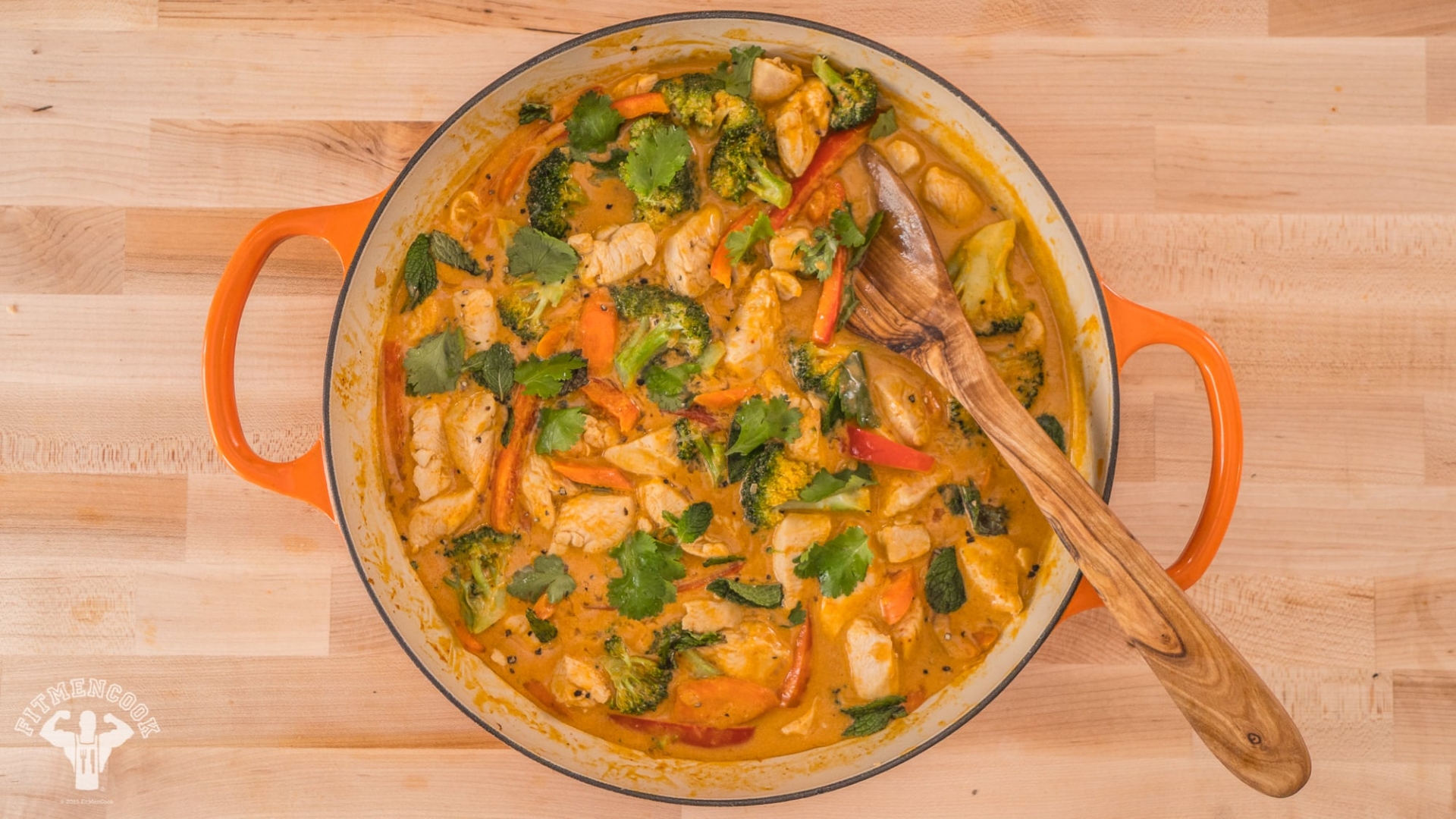 |
| Photo Fit Men Cook |
How To Make Panang
INGREDIENTS
2 tbsp oil
1/2 cup chopped shallots
1/2 cup red bell pepper diced into big squares
1/2 cup green bell peppers diced into big squares
2 cups broccoli cut into florets
1 zucchini cut into 1/4 inch thick slices and then each round, quartered (so you have triangular pieces)
1.5 tbsp minced garlic
2 tsp minced ginger
1 can coconut milk
1 cup vegetable broth
3 tbsp penang curry paste (or green or red)
2 tsp brown sugar
1 tbsp soy sauce
2 tsp rice wine vinegar
1/4 cup chopped fresh cilantro and basil (optional)
INSTRUCTIONS
Heat a large pot or duth oven over medium high heat. Add the oil and once the oil is hot, add in the chopped shallots. Let the shallots cook for about a minut until they are soft and then add in the peppers, broccoli,and zucchini. Stir for about one minute and add in the garlic, ginger, thai curry paste and stir until everything is fragrant (about 2-3 minutes).
Add in the coconut milk, broth, give verythign a good stir and then place a lid on the pot for about 10 minutes. Reduce heat to medium low. After 10 minutes, check to see if the vegetables are fork tender - let them cook longer if they need to.
Add the soy sauce, brown sugar, vinegar, lime juice and cilantro and stir to mix well. Taste and adjust salt, spice or lime as needed. If you like your curry with more liquid you can add additional coconut milk or broth.
Serve hot with jasmine rice!
 Top 15 Best Places to Visit in Thailand Top 15 Best Places to Visit in Thailand Serene shrines, spectacular skyscrapers and the best street food on the planet are all waiting for you in Thailand. Check out the list of top ... |
 Top 5 Best Places To Visit in Thailand Top 5 Best Places To Visit in Thailand Thailand is one of the most popular travel destinations in the world, thanks to its abundant beaches, islands, ... |
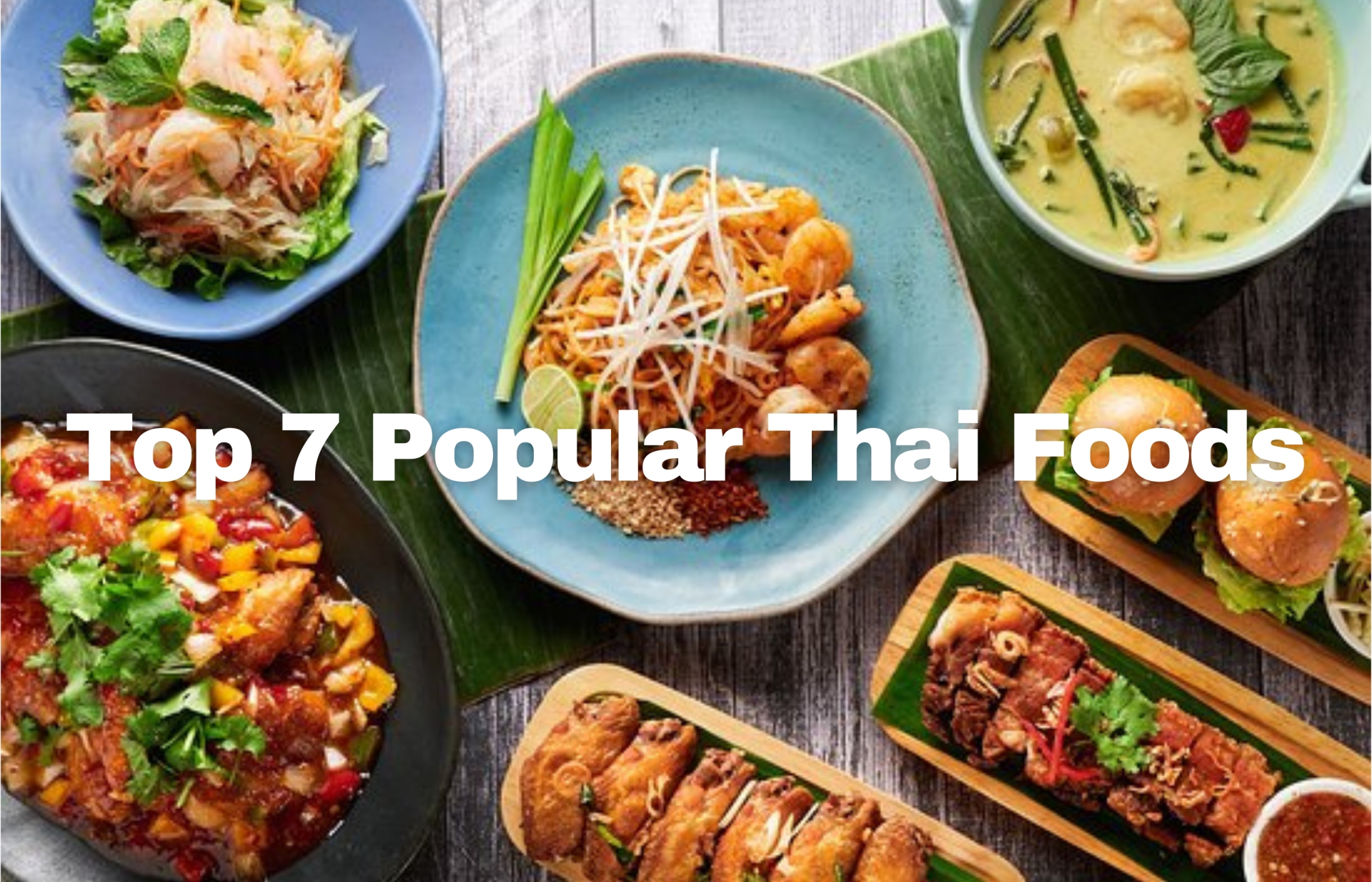 Top 7 Most Popular Foods You Must Try in Thailand Top 7 Most Popular Foods You Must Try in Thailand Having a plan to go on a food tour in Thailand for your summer vacation? Check out these most popular Thai foods you must ... |


